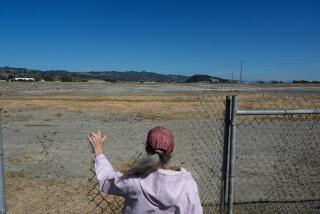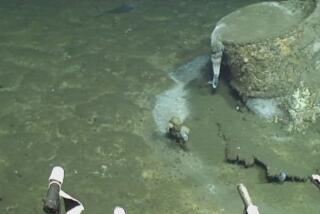Fiddling as Nuclear Disaster Brews : Regulation: Unsafe storage of radioactive waste at our two plutonium-producing plants could lead to a lethal explosion. But the Department of Energy isn’t paying attention.
- Share via
On Sept. 29, 1957, a radioactive cloud 10 kilometers across and carrying 11,000 curies of strontium-90 spread over the towns of Kyshtym and Chelyabinsk in the Soviet Urals. An area larger than Connecticut was seriously contaminated. More than 10,000 residents were evacuated.
The deadly cloud (one one-hundredth of a curie of strontium-90 is likely to cause death from bone cancer) was created when a storage tank containing highly radioactive wastes from plutonium production exploded. The tank’s cooling system had failed and liquid wastes began to dry, leaving an explosive mixture at the bottom of the tank. Soon, runaway reactions produced the explosion. The tank’s 3-foot-thick concrete cover was blown off.
Could it happen in the United States? The Department of Energy doesn’t want you to think so. But the answer is yes. Indeed, the more that is learned about the accident near Kyshtym, the more ominous are the dangers of a similar explosion occurring in eastern Washington state or South Carolina.
Hanford, Wash., and Savannah River, S.C., are the sites of the country’s two complexes that produce plutonium for use in nuclear weapons. About 100 million gallons of highly radioactive wastes are stored in 14 tanks at Hanford and in 20 at Savannah River.
The danger at Hanford stems from a chemical treatment applied to the wastes in the 1950s. That treatment, which was supposed to precipitate radioactive wastes to the tank bottom, made the mixture potentially explosive.
At Savannah River, hydrogen and organic vapor generated by high-level radioactive wastes could lead to an explosion if the ventilation system failed for an extended time. A buildup of hydrogen reaching or exceeding the lower explosive limit has taken place at Savannah River on at least two occasions. An explosion there of a magnitude comparable to Kyshtym’s could release an even greater quantity of strontium-90 and cesium-137 over areas that are much more densely populated than those contaminated in the Urals.
The Energy Department’s handling of this problem does not inspire confidence. It has misrepresented or ignored its own data, thereby failing to learn from the Kyshtym experience. For example, the department continues to downplay the risk of a tank explosion at Savannah River by citing only the probability of any given tank exploding. Since 20 tanks at Savannah River are at risk, however, the probability of an explosion occurring in at least one of them is considerably higher than the department’s estimate.
The Energy Department also claims, disingenuously, that even if a waste tank at Savannah River exploded, only a single gallon of the roughly 1 million gallons of radioactive material stored in the tank would become airborne. The Kyshtym data seriously undermine this estimate. Calculations we have performed suggest that a severe explosion in a single tank at Savannah River could release up to 100 times the strontium-90 and cesium-137 that descended on the area around Kyshtym. Should that occur, large portions of South Carolina and Georgia may have to be evacuated and essentially written off for centuries.
In 1984, the department commissioned a study of the explosive potential of the mixture resulting from the chemical treatment applied at Hanford in the 1950s. It disregarded the results of that study. Indeed, the Energy Department’s own five-year waste-management plan does not even mention the possibility of a tank explosion at Hanford. Despite the promises of Energy Secretary James D. Watkins, this lack of scientific integrity is so institutionalized in the department that it cannot bring itself to address, much less redress, some of the most pressing and dangerous issues of radioactive-waste management.
An independent agency must be created to manage the radioactive waste generated at nuclear facilities. Failing that, independent oversight and peer review of all Energy Department efforts in the field of waste management must be established.
More to Read
Sign up for Essential California
The most important California stories and recommendations in your inbox every morning.
You may occasionally receive promotional content from the Los Angeles Times.










